
Julia Marlowe was an English-born American actress, known for her interpretations of William Shakespeare's plays.

When Knighthood Was in Flower is the debut novel of American author Charles Major written under the pseudonym, Edwin Caskoden. It was first published by The Bobbs-Merrill Company in 1898 and proved an enormous success.

William Clyde Fitch was an American dramatist, the most popular writer for the Broadway stage of his time.
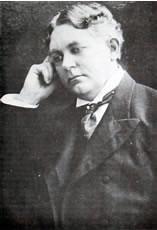
Charles Major was an American lawyer and novelist.
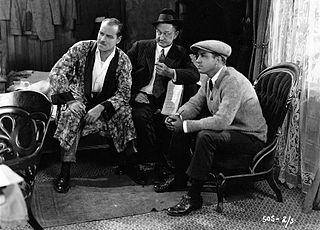
Wallace A. Worsley Sr. was an American stage actor who became a film director in the silent era. During his career, Worsley directed 29 films and acted in 7 films. He directed several movies starring Lon Chaney Sr., and his professional relationship with the actor was the best Chaney had, second to his partnership with Tod Browning.
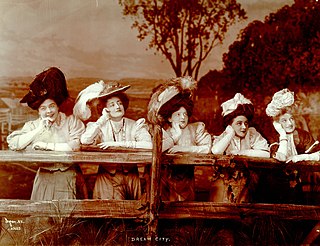
Dream City is an operetta in two acts with music by Victor Herbert and a libretto by Edgar Smith. The show contained a one-act musical burlesque The Magic Knight which parodies Richard Wagner's opera Lohengrin.
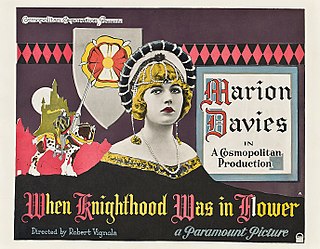
When Knighthood Was in Flower is a 1922 American silent historical film directed by Robert G. Vignola, based on the novel by Charles Major and play by Paul Kester. The film was produced by William Randolph Hearst for Marion Davies and distributed by Paramount Pictures. This was William Powell's second film. The story was re-filmed by Walt Disney in 1953 as The Sword and the Rose, directed by Ken Annakin.
Eugene A. Eberle (1840–1917) was a Broadway actor who appeared in over 60 productions, including Edwin Booth's Hamlet in 1864–65, in which he played the gravedigger.
The Garden Theatre was a major theatre on Madison Avenue and 27th Street in New York City, New York. The theatre opened on September 27, 1890, and closed in 1925. Part of the second Madison Square Garden complex, the theatre presented Broadway plays for two decades and then, as high-end theatres moved uptown to the Times Square area, became a facility for German and Yiddish theatre, motion pictures, lectures, and meetings of trade and political groups.

The Lyceum Theatre was a theatre in New York City located on Fourth Avenue between 23rd and 24th Streets in Manhattan. It was built in 1885 and operated until 1902, when it was torn down to make way for the Metropolitan Life Insurance Company Tower. It was replaced by a new Lyceum Theatre on 45th Street. For all but its first two seasons, the theatre was home to Daniel Frohman's Lyceum Theatre Stock Company, which presented many important plays and actors of the day.
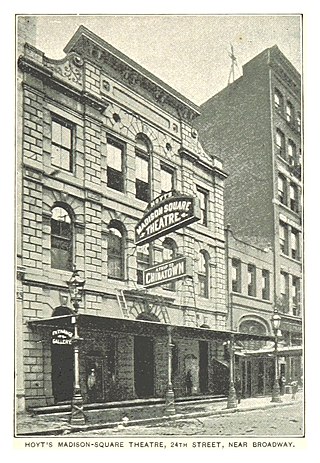
The Madison Square Theatre was a Broadway theatre in Manhattan, on the south side of 24th Street between Sixth Avenue and Broadway. It was built in 1863, operated as a theater from 1865 to 1908, and demolished in 1908 to make way for an office building. The Madison Square Theatre was the scene of important developments in stage technology, theatre design, and theatrical tour management. For about half its history it had other names including the Fifth Avenue Theatre, Daly's Fifth Avenue Theatre, Hoyt's Madison Square Theatre, and Hoyt's Theatre.
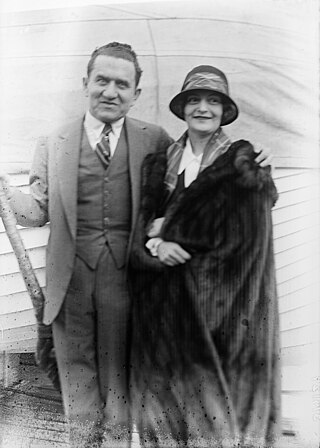
Archibald Selwyn was a Canadian-American play broker, theater owner and stage producer who had many Broadway successes. He and his brother Edgar Selwyn were partners. They were among the founders of Goldwyn Pictures, later to be merged into MGM.

Fair and Warmer is a three-act comedy play by the American writer Avery Hopwood. It was first staged at the Eltinge Theatre in New York City on November 15, 1915, running for 377 performances, featuring Madge Kennedy, John Cumberland, Janet Beecher, Ralph Morgan, Hamilton Revelle, Olive May, Robert Fisher and Harry Lorraine. Staged by Robert Milton, it was well received by critics. It is a farce about a mild-mannered banker who becomes embroiled in an innocent scheme to rekindle the romance in his marriage using his best friend's wife.
Max Freeman was a German actor, theater director, theater manager, playwright, and producer who was primarily active in the United States. After beginning his career in his native city of Berlin in 1868, Freeman eventually moved to the United States in 1871 where he began his career in America as the theatre manager for the Germania Theatre in New York City. He had a lengthy stage career as an actor in America from 1873 until his death in 1912. Known as the "godfather of comic opera", he particularly excelled in performances in roles from light operas and musical comedies, and was also responsible for directing and producing works from this genre on Broadway. He also directed and played parts in straight plays as well. His adaptation of Jacques Offenbach's Orfée aux enfers was performed for the grand opening of Broadway's Bijou Theatre in 1883, and his original musical play Claudius Nero, based on Ernest Erkstein's novel Nero, premiered at Niblo's Garden in 1890.
Lulu Belle is a play in four acts by Edward Sheldon and Charles MacArthur. It is set in San Juan Hill, Harlem, and Paris. One of the settings is a fictional Harlem nightclub called Elite Grotto. A play is about a black prostitute from Harlem who seduced a white married man. The work was controversial at the time and there were highly publicized attempts to censor and ban the play from performance at the time of its Broadway debut in 1926. The play was banned from performance in Boston by the city's mayor in 1928.

The First Year is a 1920 American comedic play written by Frank Craven, and produced by John Golden and directed by Winchell Smith on Broadway. It was a hit on Broadway, running for 729 performances.
Philip Bartholomae was an American playwright, lyricist, screenwriter, and theatre director. He wrote many plays and musicals which were staged on Broadway in the 1910s and 1920s, several of which were adapted into films with screenplays by Bartholomae. His first successful play was Over Night (1911) which was also the first play he adapted into a film in 1915. His best known stage work, Very Good Eddie (1915), was a musical adaptation of Over Night which Bartholomae created in collaboration with Guy Bolton and composer Jerome Kern. It was a Broadway hit when it premiered, and enjoyed long running revivals on Broadway and the West End in the 1970s. That work received several nominations at the 30th Tony Awards and the 1976 Laurence Olivier Awards.
Ernest Albert, born Ernest Albert Brown, was an American painter, illustrator, muralist, and scenic designer. He was a prolific scenic designer, first in St. Louis and Chicago and then on Broadway. He is considered a major American landscape painter and was elected the first president of the Allied Artists of America in 1919.
Gates and Morange was a New York City based firm of designers and builders established in 1894 by brothers Frank E. Gates and Richard H. Gates, and the artist Edward A. Morange. The firm had a prolific career as scenic designers for Broadway from the 1890s through the 1930s; creating sets for more than 50 productions. The firm also created designs for trade shows, exhibitions, and businesses. While the organization's work as set designers ended after the mid-1930s, the firm continued to operate in other capacities until it closed in 1953.
Otis C. Sheridan was an American character actor who had a five decade long career on the stage from the 1890s into the early 1940s. He made his Broadway debut in 1901 as Ludwig Dollar in Thomas Q. Seabrooke's revival of the musical The Rounders. He appeared in several more Broadway musicals and plays into the late 1930s, and was also active in regional theatre until his retirement from the stage in 1941. In addition to a career in the theater, he appeared in the films The Night Angel (1931) and Sweet Surrender (1935).












